Wilderness series week 4 how to get food by scavenging
- Leatha Snyder

- Jun 13, 2019
- 8 min read
Hey guys todays post is continuing on with the wilderness series. Just to recap I have discussed so far: shelters, water, starting a fire. So, the next important item is finding a food source. Ideally it would be great if you could still walk into a store and get everything you want or need. But in reality, that probably won’t be possible in an emergency,
There are several options for finding food: scavenging, hunting, fishing. I feel that each one deserves to be addressed so in this post I will discuss scavenging, and in a separate post I will talk about hunting and fishing. Just because there are so many things to cover in each of these that I feel putting it into one post would make for a really long read. I will also do a supplemental post on some of the best fishing places I have found in my area and the best baits to use.
So, with out further ado, Lets get down to scavenging, in my research I found There are over 1,400 types of edible bugs in North America alone! I doubt you are going to spend your time memorizing all of these edible bugs and then learning to identify them. So, follow these rules to determine if a bug is edible:
Pretty much all bugs are edible!
Avoid bugs which sting
Avoid bugs which are hairy
Avoid bugs with bright colors
Avoid disease carriers (ticks, mosquitoes, flies…)
There are a lot of exceptions to these rules though. For example, bees sting but are edible and considered quite tasty. Tarantulas are hairy and are sold roasted as a delicacy in many cultures. Even if a bug has some harmful poison, it can usually be destroyed just by cooking it.
Here are some examples of how to cook insects so they are safe to eat and taste better:
Ants: Roast them
Crickets and grasshoppers: Roast them; you can also make flour of out them. Roast the in the oven until they are completely dry and then use a mortar to crush their bodies. Now you have flour!
Termites: Slightly roast them
Meal worms: Boil for 1 minute or saute in oil/butter
Most likely you will want to eat plants, they have less of a gross out factor. Here are some edible plants that can be found anywhere even in the cities:
Amaranth is a weed that looks a lot like pig weed, and is a tall, upright, broad-leafed plant that grows all-year round. It comes in all sizes, shapes, and colors. The leaves can be round or lance-shaped, measure from five to fifteen centimeters long, and have a light green, dark green, reddish, or variegated color. The seeds are usually white, yellow, pink or black and the flowers can be huge tassels or tiny globes, with a red, pink, yellow or cream color.
Amaranth is kind of leafy vegetable and grain that’s actually been eaten for centuries all over the world. Amaranth seeds have been used since ancient times in Central and Latin America and in the countries of the Himalayas, and the leaves are used across Asia. Most green-leaved varieties are popular in India and other places. The Chinese prefer their amaranth red-leaved and amaranth grain once was a staple in the diets of pre-Colombian Aztecs.
Amaranth seeds, in particular, have a much higher content of the mineral’s calcium, magnesium, iron and of the amino acid Lysine. It’s actually much higher in nutrients than beets, Swiss chard and spinach. Also, amaranth leaves contain three times more calcium and three times more niacin (vitamin B3) than spinach leaves.
Burdock is mostly considered a stout, common weed with annoying burrs that stick to animal fur and clothing. This plant grows relatively tall therefore having deep roots which are brownish green, or nearly black on the outside. It has a basal rosette of leaves that stays close to the ground the first year and the beginning of the second — these can grow up to a meter wide.
Burdock is an interesting biennial plant because it consists primarily of carbohydrates, volatile oils, plant sterols, tannins, and fatty oils. Researchers aren't sure which active ingredients in burdock root are responsible for its healing properties, but this plant may have anti-inflammatory and antibacterial effects. In fact, recent studies show that burdock contains phenolic acids, quercetin and luteolin, which are all are powerful antioxidants.
Better known as bulrush, this plant is easily recognizable by its brown cigar-shaped head that stands atop a very long, stout stalk. Young shoots first emerge in spring and once fertilized; the female flowers transform into the familiar brown "cigars" also called candlewicks that consist of thousands of tiny developing seeds. Bulrush is one of the most important and most common wild foods that also boast a variety of uses at different times of the year — it can be used to make mats, baskets, and the cigar-shaped head can even be used as packing material. Dipping the head in oil or fat, they can be used as torches.
Aboriginals used the roots to make flour (high in protein and carbohydrates) and the fluffy wool of the head was used as diapers because of its softness and absorbency. These “cigar-heads” are also excellent fire started. The tight heads are often dry inside even after a heavy rain, making this essential survival tinder. Inside the stalks of fresh shoots is tasty food that can be eaten as is, sautéed or tossed into a stir fry.
If you’re stranded in the wild and hungry then running into a field of clover would definitely be a stroke of luck… mostly because this wild plant is 100 percent edible. Clover leaves are delicious in salads or as juices, and are also a valuable survival food as they’re high in protein, are widespread and plentiful in most parts of the world. They are not easy to digest raw, but this can be easily fixed by juicing them. The clover dried flower heads and seed pods can also be ground up into nutritious flour and mixed with other foods. The dried flower heads can also be steeped in hot water for a healthy, tasty tea.
Chickweed is one of those weeds we’re used to seeing spring up everywhere — your backyard lawn, between cracks in the pavement, in your flowerbeds, and especially in the wild. It’s wild and edible and grows all year round and is hardy despite its delicate appearance. Chickweed is an easy-to-grow plant that’s healthy to eat and it produces flowers throughout the growing season even in hot, dry conditions; it’s multi-functional because its presence decreases insect damage to other plants. This plant has a lot of health benefits and is full of vitamins, minerals and other essential nutrients.
Remember when you played with dandelions as kids, with those delicate yellow (or white) feather-like flower heads that flew off into the wind with a gust of air? Less endearingly they’re also a weed and the scourge of many a lawn perfectionist: anyone who ever had a front yard will recognize those barbed leaves and cherubic yellow flowers. But don’t wipe them out with weed killers, just eat them instead. Dandelion leaves are packed with vitamin A, vitamin C, and beta carotene. The blooming flowers can be made into a great homemade wine, too (if you’re stranded for a while and have time to kill).
Stranded at the beach and need to find food to survive? Seaweed is likely to be your most obvious, easy-to-harvest food source and is full of nutrients and minerals. An important note: not all seaweed is edible. Seaweed washed up on shore can be old and rotting and could make you sick. So could certain kinds of brown seaweed (they could give you a bad tummy ache), and seaweed found with blue algae should be avoided too (green-blue algae is poisonous). The best seaweed is eaten green and fresh from the ocean, stream, or river.
Although purslane is mostly considered a weed in the United States, it can also be eaten as a tasty leafy vegetable, though it has a slightly sour and salty taste. It is consumed throughout much of Europe, the Middle East, Asia, and Mexico. Purslanes’ stems, leaves and flower buds are all edible, which makes it useful in a salad, stir-fried, or cooked as spinach is, and because of its mucilaginous quality it also is suitable for soups and stews. Purslane contains more omega-3 fatty acids any other leafy vegetable plant, which should keep you going for a while if you’re stranded in the wild.
Wood sorrel is an illustrious (if slightly mythical) backstory — it is rumored to be the plant that Saint Patrick used to illustrate the Trinity to the ancient Irish people as it is distinguished by its clover-like leaves, arranged alternately along the stem, divided into 3 heart-shaped leaflets. Aside from this, wood sorrel is also a versatile edible weed too. It is sour, but pleasantly so (that is, not bitter), and is high in vitamin C. It’s also handy if you’re dehydrated because the root system, seed pods and leaves are all edible and are juicy enough to serve as a water source. Though fair warning: wood sorrel is also an effective diuretic and so shouldn’t be consumed in high quantities as it could end up doing the opposite and dehydrating you instead. Its diuretic qualities though do make it good for soothing an achy belly, relieve indigestion, encourage an appetite, and quell vomiting.
If you are not sure if the plant is edible or not there is a test that you can do to see if it’s safe, it called the universal edibility test. In order to Perform the Test
Fast for eight hours to ensure that test results are accurate and any reaction comes from the plant ingested rather than an unknown source.
Separate the plant you're testing during the eight hours fast. You'll want the leaves separate from the stem and any flowers separated as well.
Test for reaction by placing one portion of the plant against your lips. Wait fifteen minutes to see if you react. If there is no stinging or burning, you can continue.
Place the portion you're testing against your tongue. Do not chew or swallow. Wait fifteen minutes to see if you react. If you do not, you can test another portion of the plant in the same way. Continue until all sections have been tested.
Reacting during any part of this test means the plant portion has failed the universal edibility test and is not safe for ingesting.
To Complete the Test
Take one portion of the plant that passed the tests above, and prepare it as you would plan to eat it if it were an edible wild plant.
Place a small amount in your mouth and chew, be sure you do not swallow at this time. Wait three minutes. If there is no reaction, you can continue the test.
Swallow the portion of the plant you've chewed and wait eight hours. During that time frame, if you experience any reaction, induce vomiting to remove the toxins from your system. If there is no reaction, you can continue the test.
Prepare a 1/4 cup of the plant portion and eat. Wait an additional eight hours. Again, if you react at all, induce vomiting. If there is no reaction, that portion of the plant is safe to eat and has passed the universal edibility test.
Test each part of the plant for edibility. Just because one part is safe to ingest does not mean that other sections of the plant are safe to ingest. Each portion needs to be tested separately to ensure that you are dealing with an entirely edible wild plant.
Thanks for checking out this post and please check out these websites for more information. There is so much useful information I couldn’t add it all here. But they make for some good reading. Remember this is only advice for extreme conditions such as emergencies where this is a last resort. Thanks again and see you next time.


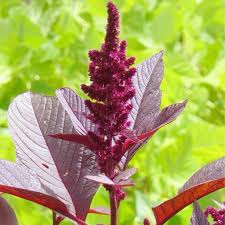

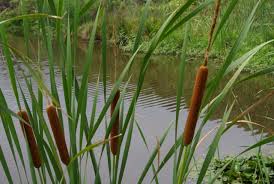




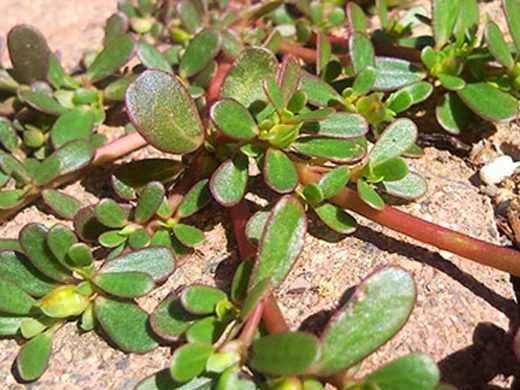



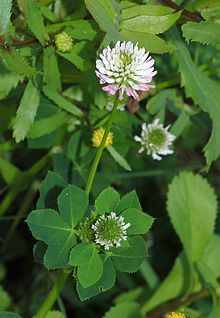
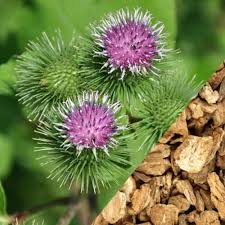


Comments